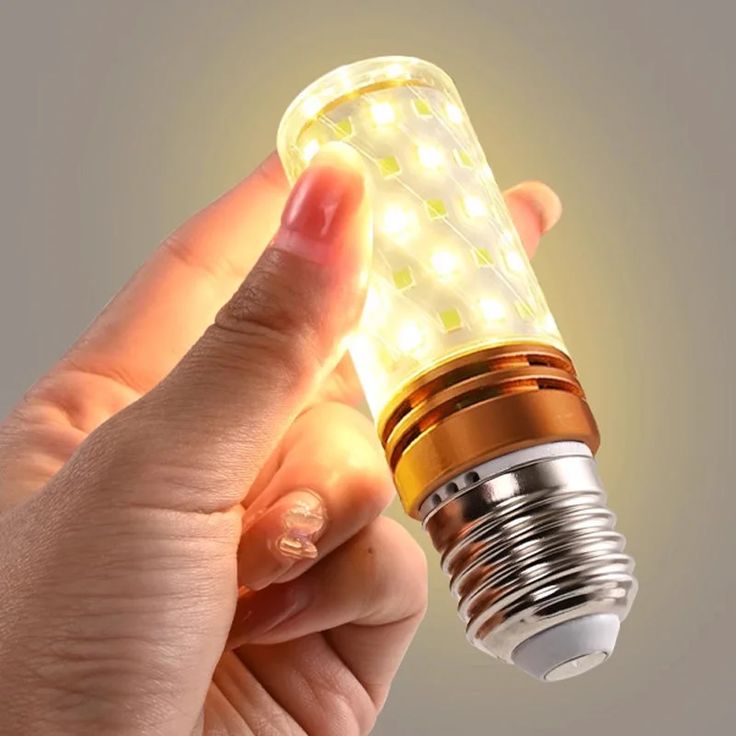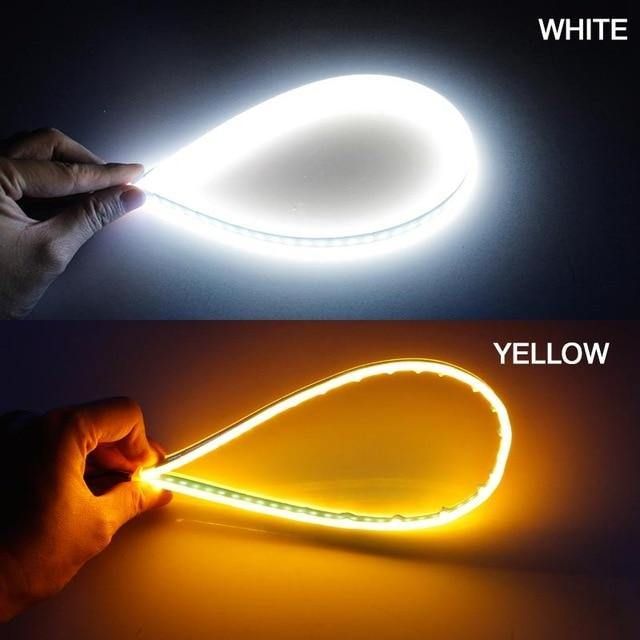In the realm of modern lighting solutions, LED lights have become a staple for their energy efficiency, longevity, and eco-friendly nature. However, if you find yourself wondering, “Why is my LED light flickering?” you’re not alone. This common issue can be perplexing and frustrating, but fear not, as we delve into the intricacies to shed light on the causes and solutions. In this comprehensive Guide, we will explore the reasons behind this phenomenon, offer solutions, and provide valuable insights into the features. Let’s embark on a journey to uncover the secrets of LED light flickering and banish the flicker one glow at a time.


Recognizing LED Technology’s Fundamentals
Before delving into the flickering phenomenon, let’s establish a foundational understanding of LED technology. Light-emitting diodes (LEDs) function by passing an electrical current through a semiconductor, resulting in the emission of light.
LEDs are more robust and energy-efficient than conventional incandescent bulbs as they don’t rely on a hot filament.
Common Culprits Behind LED Flickering
LED light flickering can be a vexing issue, disrupting the smooth illumination we expect from these energy-efficient lights. Understanding the common causes behind this flickering is the key to resolving the problem and enjoying a consistent lighting experience. Here’s a brief overview of the primary culprits:
Voltage Fluctuations :
LED lights are sensitive to changes in voltage. Fluctuations in the power supply can lead to flickering. Identifying and addressing issues related to unstable voltage is crucial for maintaining a steady glow.
Incompatible Dimmer Switches :
The use of incompatible dimmer switches is a frequent cause of LED flickering. Not all dimmer switches are designed to work seamlessly with LED technology. Ensuring compatibility between your dimmer switch and LED lights is essential for flicker-free lighting.
Loose or Faulty Wiring :
Wiring issues are another common culprit. Loose or faulty wiring can interrupt the flow of electricity, causing LED lights to flicker. Thoroughly inspecting and securing all electrical connections is a vital step in troubleshooting flickering problems.
Overloaded Circuits :
Overloaded circuits, burdened with more electrical load than they can handle, contribute to LED flickering. Distributing the electrical load evenly and avoiding circuit overloads is crucial for stable and uninterrupted LED lighting.
By addressing these common causes systematically, you can troubleshoot and resolve LED light flickering issues, ensuring a reliable and enjoyable lighting experience in your space.
Troubleshooting Flickering Issues
When faced with the frustrating challenge of LED light flickering, a systematic approach to troubleshooting can help you identify and resolve the underlying issues. Here’s a brief guide to the essential steps:
Checking the Power Source:
Begin by ensuring a stable power source. Fluctuations in voltage can lead to LED flickering. Verify that the power supply is consistent and within the recommended range for your LED lights.
Inspecting Dimmer Switches:
Dimmer switches play a crucial role in controlling the intensity of LED lights. However, incompatible or faulty dimmer switches can cause flickering. Inspect the dimmer switch for compatibility and proper functionality.
Verifying Wiring Connections:
Loose or faulty wiring is a common culprit for LED flickering. Thoroughly inspect all wiring connections, ensuring they are securely in place. Address any loose or damaged wires to maintain a stable electrical flow.
Addressing Circuit Overloads:
Overloaded circuits can contribute to flickering issues. Evaluate the electrical load on the circuit and redistribute it if necessary. Avoiding circuit overloads ensures a consistent power supply to your LED lights.
By systematically addressing these troubleshooting steps, you can pinpoint and eliminate the factors causing LED flickering, restoring a steady and reliable lighting experience in your space.
Advanced Solutions for Persistent LED Flickering
While basic troubleshooting can often resolve LED flickering issues, persistent problems may require more advanced solutions. Here are three approaches to consider for a lasting and flicker-free lighting experience:
Consulting an Electrician:
When flickering persists despite initial troubleshooting, seeking the expertise of a qualified electrician is a prudent step. Electricians have the knowledge and tools to conduct a thorough assessment of your electrical system.
They can identify and rectify complex wiring issues, ensuring a stable power supply to your LED lights. Professional intervention adds a layer of precision to the resolution process, addressing hidden electrical concerns that might be challenging for the average user to diagnose.
Upgrading Electrical Systems:
Outdated or inadequate electrical systems can contribute to LED flickering. Consider upgrading your electrical infrastructure to meet the demands of modern lighting technology.
This may involve replacing old wiring, upgrading circuit panels, or ensuring that your home or office has sufficient electrical capacity. By investing in a robust electrical system, you create a foundation for consistent and reliable LED lighting, minimizing the risk of flickering issues in the long term.
Exploring Smart Lighting Options:
Smart lighting solutions offer a technologically advanced approach to address LED flickering. These systems often come equipped with built-in features to regulate the power supply and maintain consistent illumination.
Smart lighting allows for customization of light intensity, colour temperature, and even scheduling, offering a tailored and flicker-free lighting experience. Exploring smart lighting options not only resolves flickering but also opens the door to a more sophisticated and convenient lighting control system.
User-Friendly Tips for LED Maintenance
Ensuring the longevity and optimal performance of LED lights involves more than just addressing flickering issues. Here are some user-friendly tips for effective LED maintenance:
Regular Cleaning:
Dust and debris can accumulate on LED fixtures, affecting their light output and efficiency. Periodically clean the light fixtures, ensuring that no dirt or grime impedes the illumination. Use a soft, lint-free cloth to wipe down the fixtures gently.
Regular cleaning not only enhances the aesthetic appeal of your lights but also ensures they shine brightly without hindrance.
Monitoring Temperature:
LED lights are sensitive to temperature fluctuations, and excessive heat can impact their performance. Ensure that the ambient temperature around your LED fixtures remains within the recommended range.
Adequate ventilation and proper placement of fixtures can prevent overheating, contributing to the longevity of the LED components. Monitoring temperature is a simple yet effective way to maintain consistent performance.
Updating Firmware for Smart Lights:
If you’ve invested in smart lighting technology, keeping the firmware updated is crucial. Manufacturers often release firmware updates to address bugs, enhance functionality, and improve compatibility. Regularly check for updates and follow the manufacturer’s instructions to ensure your smart lights are running the latest firmware.
This proactive approach not only prevents potential issues but also allows you to enjoy the full range of features offered by smart lighting systems.
Comparing LED Flickering to Other Lighting Issues
Understanding the distinct nature of LED flickering in comparison to other lighting issues provides valuable insights into troubleshooting and resolving specific problems. Here, we contrast LED flickering with traditional incandescent flickering and differentiate it from fluorescent light problems:
Contrast with Traditional Incandescent Flickering:
LED flickering differs significantly from the flickering observed in traditional incandescent bulbs. Incandescent flickering is often associated with the natural ageing process of the filament, which may result in irregular illumination.
In contrast, LED flickering is more intricately tied to issues such as voltage fluctuations, incompatible dimmer switches, or wiring problems. LED lights generally maintain their brightness throughout their lifespan, with flickering being a symptom of external factors rather than an inherent characteristic.
Differentiating from Fluorescent Light Problems:
Fluorescent lights commonly exhibit issues such as flickering, buzzing, or delayed start times. Unlike LED flickering, which is often linked to external factors, fluorescent flickering may be indicative of problems within the bulb itself.
For instance, a failing starter or ballast can contribute to inconsistent illumination in fluorescent lights. LED flickering, on the other hand, is more likely to be influenced by issues external to the LED bulb, such as electrical compatibility or circuit problems.
Frequently Asked Questions (FAQs)
Q1: Why do my LED lights flicker?
A1: LED lights may flicker due to voltage fluctuations, incompatible dimmer switches, or electrical interference. Finding the underlying problem is essential to a successful outcome.
Q2: Can I use LED lights with any dimmer switch?
A2: Not all LED bulbs are compatible with every dimmer switch. It is advisable to use dimmable LEDs specifically designed for your dimmer switch to prevent flickering issues.
Q3: Are voltage stabilizers necessary for LED lights?
A3: While not always necessary, voltage stabilizers can help regulate power supply, especially in areas prone to electrical irregularities, reducing the likelihood of LED flickering.
Q4: How do I address electromagnetic interference with LED lights?
A4: Installing filters or shields to minimize electromagnetic interference from other devices on the same circuit can help resolve flickering problems.
Q5: Can LED lights be used outdoors?
A5: Yes, many LED lights are designed for outdoor use. However, it is essential to choose LEDs with appropriate weatherproofing for durability.
Conclusion
In the world of modern lighting, where Light Emitting Diode (LED) technology illuminates our spaces with energy efficiency and longevity, the perplexing issue of LED light flickering can cast a shadow over our experiences.
In conclusion, by unraveling the mystery of LED light flickering, we equip ourselves with the knowledge to enhance our lighting environments. Banishing the flicker ensures not only a consistent and reliable LED lighting experience but also contributes to the longevity of these innovative fixtures. Embrace the light, eliminate the flicker, and let the brilliance of LED technology illuminate your spaces seamlessly.
As an Amazon Associate I earn from qualifying purchases.